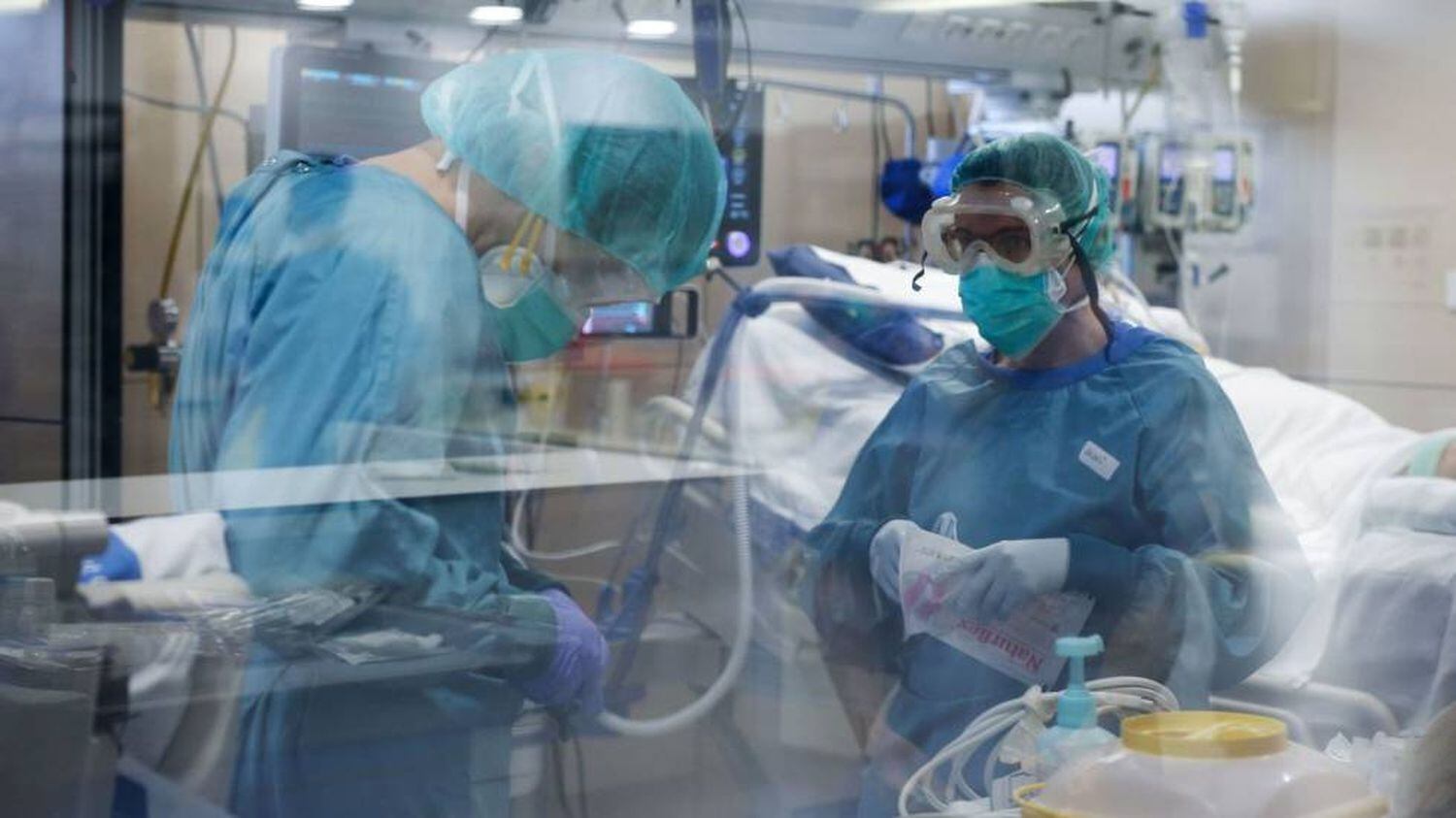Spain’s intensive care units finally get some respite after coronavirus overload Admissions in ICUs are beginning to slow after a fall in emergency room cases, but experts call for caution and for the public to keep their guard up

The ICU at the Hospital Vall d’Hebron in Barcelona.PAU BARRENA
After more than three weeks of lockdown in Spain, the country’s intensive care units (ICUs) are beginning to see the light at the end of the tunnel. While they continue to be overloaded, with their usual capacity multiplied by as much as four times, and their staff exhausted due to a seemingly endless coronavirus pandemic, the intake of critical patients is beginning to slow. It’s a small truce after several days on the brink of total breakdown.
Several weeks are still needed before the ICUs return to their usual state and dimensions, but a reduction in emergency room cases, which translates into fewer hospitalizations, is beginning to be seen. Experts consulted are calling, however, for “people to keep their guard up.” Since the Covid-19 disease took hold in Spain, a total of 6,931 patients have received treatment in Spain’s ICUs, according to figures from the Health Ministry.
Healthcare sources say that some major Madrid hospitals are already planning a withdrawal of resources and a gradual return to normal
The stabilization of the situation can now be seen in the data coming from the hospitals in the region that has been hardest hit by the coronavirus: Madrid. One example of this is the Infanta Sofía Hospital, in the city of San Sebastián de los Reyes, located north of the capital.
The health center usually has eight beds in the ICU, and on March 16 seven of them were occupied. Three days later there were 11 ICU patients; six days later, 25; and on April 1 there were as many as 40 people in the ICU itself, and other wards that had to be adapted to house these critical patients, including the recovery area, operating theaters and any other bed that could be adapted with a respirator and 24-hour monitoring.
By last Friday, there were 38 patients; on Saturday, the same number, and by Sunday there were 37, according to data obtained by EL PAÍS from hospital sources, given that the Madrid regional government refused to supply any figures. Of nearly 40 hospitals, among which there were a number of private centers, 30 saw the same or fewer ICU patients on April 4 compared to the previous day.
Healthcare sources say that some major Madrid hospitals, such as the 12 de Octubre and the Fundación Jiménez Diaz, are already planning a withdrawal of resources and a gradual return to normality. At the Clínico San Carlos, four of the seven wards that were opened to deal with the flood of patients have now closed. Madrid regional health chief, Enrique Ruiz Escudero, said on Monday that of 1,955 emergency cases dealt with on Monday of last week, there are now 390. However, the clear improvement in the flow of patients and the number of hospitalizations takes a little longer to be seen in the ICUs.
For several days now, the number of patients being discharged from hospital in Madrid has been exceeding the number of deaths
A critical coronavirus patient stays on average for two or three weeks in the ICU, a lot longer than, for example, post-surgical patients, who usually stay for 48 or 72 hours. “In the Madrid region, and specifically in my hospital, in Torrejón, where this started a little before the rest of places, the pressure in terms of the number of admissions has stabilized,” explains María Cruz Martín, a member of the board of the Intensive Medicine Society (Semicyuc) and the head of the UCI at her hospital. Her center even accepted two critical patients from another hospital, one that was struggling to cope.
“The situation is much better,” she adds. “There are still a lot of patients, 1,500 in the Madrid region, in the ICUs. Of these, more than 50% are outside the usual wards.” The situation appears to have peaked, but Martín warns that they are “still very, very far from normality and there are still patients in normal hospital wards who could end up in the ICU, but it is true that the situation is a little better, it’s more under control.”
Cruz Martín adds that, for several days now, the number of patients being discharged from hospital in Madrid has been exceeding the number of deaths. The region is likely to have passed its peak, and Catalonia is nearing the same point, according to the data compiled by Semicyuc. But the ICUs are still operating at “200 to 300% of their baseline situation.”
In Catalonia there are 1,970 ICU beds in the region’s hospitals, triple the amount there were two weeks ago. Of them, Catalan health chief Alba Vergés reports, 85% are occupied, with 1,512 Covid-19 patients. “The pressure is still high, but it is not rising,” explains Joan Ramon Masclans, the president of the Catalan Society of Intensive Medicine. “Compared with one or two weeks ago, when we were having to open up more wards, now the situation is getting back to normal. While the occupation level is high and today [Monday] we are over triple the normal level.”
In Barcelona’s Hospital del Mar, where Masclans is the chief of service for intensive medicine, they have gone from 24 to 92 ICU beds. “The admissions are compensated by discharges, which, being cautious still, is good news. We are working with less of a sense of being overwhelmed than we were a few weeks ago. But rather than saying that we have reached a peak, I’d say we were at a plateau.”
Source:english.elpais.com/

